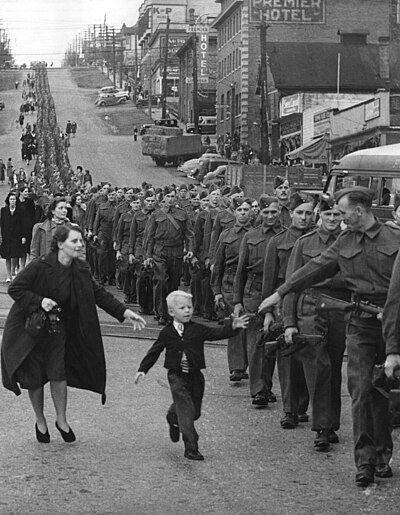User:MarSch/Main page
We are collaborating to create the best and most comprehensive encyclopedia ever and in this English version, started in 2001, we are currently working on 6,914,675 articles. This page is also available with simple layout.
Today's featured article Weise's epitaph in Eisenberg, Germany In historical linguistics, Weise's law describes the loss of palatal quality some consonants undergo in specific contexts in the Proto-Indo-European language. In short, when the consonants represented by *ḱ *ǵ *ǵʰ, called palatovelar consonants, are followed by *r, they lose their palatal quality, leading to a loss in distinction between them and the plain velar consonants *k *g *gʰ. Some exceptions exist, such as when the *r is followed by *i or when the palatal form is restored by analogy with related words. Although this sound change is most prominent in the satem languages, it is believed that the change must have occurred prior to the centum–satem division, based on an earlier sound change which affected the distribution of Proto-Indo-European *u and *r. The law is named after the German linguist Oskar Weise (epitaph pictured), who first postulated it in 1881 as the solution to reconciling cognates in Ancient Greek and Sanskrit. (Full article...)
Recently featured:
Selected anniversaries
More anniversaries:
|
In the news
Did you know...
Today's featured pictureWait for Me, Daddy is a photograph taken by Claude P. Dettloff of the British Columbia newspaper The Province. It depicts a column of Canadian Army soldiers of the British Columbia Regiment (Duke of Connaught's Own) marching in New Westminster on October 1, 1940. In the foreground, five-year-old Warren "Whitey" Bernard runs out of his mother's reach towards his father, Private Jack Bernard. The photograph received extensive exposure worldwide, and was used in Canadian war-bond drives.Photograph credit: Claude P. Dettloff; restored by Yann Forget
|
Portals
Wikipedia in other languages
This Wikipedia is written in English. Many other Wikipedias are available; some of the largest are listed below.
-
1,000,000+ articles
-
250,000+ articles
-
50,000+ articles
Wikipedia's sister projects
Wikipedia is written by volunteer editors and hosted by the Wikimedia Foundation, a non-profit organization that also hosts a range of other volunteer projects:
-
Commons
Free media repository -
MediaWiki
Wiki software development -
Meta-Wiki
Wikimedia project coordination -
Wikibooks
Free textbooks and manuals -
Wikidata
Free knowledge base -
Wikinews
Free-content news -
Wikiquote
Collection of quotations -
Wikisource
Free-content library -
Wikispecies
Directory of species -
Wikiversity
Free learning tools -
Wikivoyage
Free travel guide -
Wiktionary
Dictionary and thesaurus



